

Sustainable ventilation with textile ducts.
Sustainability as a business model.
At KE Fibertec AS, sustainability as a business model has been part of our DNA and strategy since 2012, when we were first certified according to the Cradle to Cradle standard.
We are the only manufacturer in the world to produce all textiles at our own in-house weaving mill, which is why we needed to differentiate ourselves from cheap textiles purchased in Asia and Eastern Europe.
Although sustainability is much more important in the construction industry today than in 2012, it is important to realise that for us it is not just about the carbon footprint of our products, but just as much about the circular economy (waste as a resource), using healthy materials and not least supporting relevant building certifications through EPDs and other means.
These four pillars are the backbone of KE Fibertec’s sustainability strategy. Even though progress is sometimes slow, there is a general consensus among the public that we no longer need to discuss why to choose sustainable products. Now it is more about how to implement and document a sustainable solution.
With this brochure, we want to show many of the actions we have taken. We are not there yet, but we are proud of the results we have achieved. Not least because we as a company have a social responsibility and because our investments are reflected in our bottom line. We believe that real green transition should be a business model and not a fad.

Managing Director, KE Fibertec Group
Our shared values.
KE Fibertec’s purpose in developing textile based ventilation is to create a healthy and good indoor climate for everyone. It is the whole basis for the work we do every day. If our purpose is very much about why, our values are very much about how we develop and work with the world around us.
We want to have good morals and work according to standards of proper conduct - both as individuals and as a company.
As a starting point, KE Fibertec is committed to following all applicable international and national laws, rules and regulations. But because we want much more than that, we set common guidelines for the way we work internally in the KE Fibertec Group.
Our general principle in all conduct is that we can be trusted and that we put action behind our words. This is in line with our targeted work with sustainability, which characterises the company and our entire approach to CSR. Through a wide range of initiatives, we contribute to a positive development in the world in the areas we are involved in.
Today, we are a modern company with international activities in many parts of the world.
We advise on and contribute to increased sustainability in construction and continuously develop our core competences in the development, logistics and production of textile based ventilation products.

Dialogue
In close dialogue with our customers and partners, we will find joint solutions that meet the end customer’s expectations for a good indoor climate.

Quality
KE Fibertec will supply the best quality on the market and on time. We do not compromise on quality, neither in design, documentation nor with the finished products.
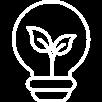
Innovation and sustainability
By being innovative and creative, we will set the standard for textile based ventilation products globally in both function and choice of sustainable materials.

Openness and respect
KE Fibertec will develop a culture in the Group based on respect for the individual’s competences and differences. Regardless of position, there must be room to be heard and for good ideas to be appreciated.
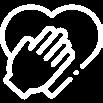
Honesty
We want to be honest in our communication, even if it hurts.
Strategy behind our initiatives.
Innovative and healthy materials
KE Fibertec offers healthy materials made with respect for the environment
KE Fibertec works purposefully with the UN Sustainable Development Goals SDG6, SDG7, SDG8 and SDG12
At KE Fibertec we no longer use piece dyeing of textiles, but offer yarn dyeing or printed materials
Materials certified according to Cradle to Cradle and OekoTex standards
SDG

CO2-neutral Danish factories by 2030
Documented overview of Scope 1, Scope 2 and Scope 3 (97% from Scope 3)
Solar cells installed at weaving mill
New company cars are all electric
ESG reporting and CSRD reporting from 2025
2030 target:
100% reduction at Scope 1 and Scope 2 level, 30% reduction at Scope 3 level
Building certifications
KE Fibertec supports our customers in meeting climate targets within building regulations
With third-party certified EPD for the entire product, we offer complete and dynamic CO2 data
KE Fibertec supports DGNB, BREEAM and LEED building certifications
KE Fibertec products must create added value for our customers
Waste-neutral production
All production waste in Denmark must be upcycled into new products or recycled
100% recycling for bulb production of up to 8 tons of yarn waste
All textile waste is delivered to Kvadrat Really for further processing into new products
Goal for 2025: Upcycling of min. 35 tons of residual material from the factories in DK and CZ and 8 tons of yarn from weaving mill
SDG

SDG SDG


KE Fibertec Group
KE Fibertec AS VEJEN, DENMARK

Euro Air DK VEJEN, DENMARK
KE Fibertec Weaving Mill VEJEN, DENMARK

Euro Air CZ VARNSDORF, CZECH REPUBLIC
KE Fibertec Deutschland GmbH BARSINGHAUSEN, GERMANY
KE Fibertec UK Ltd. HAMPSHIRE, ENGLAND
KE Techmon [50,1%] VEJEN, DENMARK
KE Fibertec NA, Inc. EDGEWOOD, MD, USA Air
WI, USA

Documentation behind the words.
Over the years, KE Fibertec has worked continuously with certifications. We have not only reached a significant milestone, but also gained a solid foundation for our further development.
It is not just about documenting KE Fibertec’s contribution to sustainable development, but about making our efforts visible to employees, partners, suppliers and customers.
As a company, we focus on our products and how we can continuously optimise and develop in a more environmentally friendly direction. But we want to make a difference and focus on how we work with green objectives. That is why KE Fibertec is certified according to ISO 14001:2015, ISO 45001:2018 and ISO 9001:2015.
Transparency and easier workflow
With a third-party verified EPD, we offer complete documentation on each project with CO2 data.
Overview and extra points for building certifications
In co-operation with Ramboll Denmark, we have developed complete documentation packages according to DGNB, BREEAM and LEED v4 with points for material ingredient.
Material health ensures long product life
Our primary textile materials are Cradle to Cradle certified and we take responsibility for the lifetime of our products from production to recycling. Furthermore, our textile material is made from Oeko-Tex standard 100 certified yarns.

We focus on the UN Global Goals.
Since 2021, the 17 Sustainable Development Goals have been a central part of our approach to sustainability. We have selected four specific goals that we are working towards.
Working with external advisors has provided us with valuable input and challenged us in relevant areas. This has enabled us to make strategic choices that not only strengthen our sustainable profile, but also contribute to concrete improvements and support our continued growth.
By continuously evaluating and developing our work based on the global goals, we ensure that sustainability remains an integral part of our business. It also means that we constantly focus on where we can strengthen our efforts –both in our internal processes and in the solutions we offer our customers.
Our products and processes meet a range of requirements within the construction industry and document that our solutions make a real difference to the climate. This is part of our belief that responsible development and green choices must be incorporated into the entire value chain.
Our work with the Global Goals, together with our Cradle to Cradle and ISO certifications, helps us to fully document that we meet the standards set for the construction industry and that our solutions actually make a difference to the climate.
We call this Green Thinking!
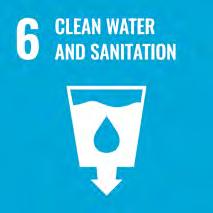
SUSTAINABLE DEVELOPMENT GOAL 6
Clean water and sanitation
At KE Fibertec, we work purposefully on saving the planet’s resources and have implemented extensive water-saving efforts in the dyeing of our yarns, so we only offer Cradle to Cradle approved colours. This corresponds to a 67% reduction in water consumption and wastewater, equivalent to 1 million litres of water annually.

SUSTAINABLE DEVELOPMENT GOAL 8
Decent work and economic growth
KE Fibertec works with CSR throughout the company by taking social responsibility and contributing to positive development. At the same time, we contribute to economic growth and development with a sustainable focus. We focus on the entire value chain, and our Code of Conduct follows the UN Global Compact on human rights, anti-corruption and the environment.

SUSTAINABLE DEVELOPMENT GOAL 7
Affordable and clean energy
In our efforts to become carbon neutral by 2030 at our Danish factories, we focus on minimising dependence on fossil fuels and instead use new, alternative energy sources. Since 2014, our Danish factories, head office and weaving mill are 100% powered by wind energy. At the same time, we focus on converting our gas heating to a carbon-neutral energy source and thus contribute to the promotion of sustainable energy.

SUSTAINABLE DEVELOPMENT GOAL 12
Responsible consumption and production
At KE Fibertec, we have worked hard to reduce our footprint in consumption and production, both in terms of waste and CO2. In continuation of our Cradle to Cradle certification, we now recycle residual yarns to produce bulb cords for our duct suspension with a reduction of approximately 8 tons of residual yarn. We have reduced the waste material from our laser cutting machines by 35 tons.
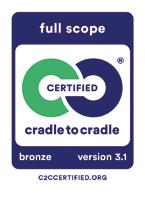
CRADLE TO CRADLE
Innovative and healthy materials.
When we introduced the world’s first Cradle to Cradle certified ventilation solution to the market in 2012, it was the culmination of many years of work. We design products that benefit rather than putting strain on the climate, while taking into account the growing scarcity of resources.
The full life cycle
The Cradle to Cradle mindset takes the Cradle to Grave idea one step further by taking responsibility for the full product life cycle. Ultimately, this means that the product is not only handled responsibly, but also used in the production of a new product. In principle, the product’s life cycle is in principle infinite, because once it has served its purpose, it does not become waste. For KE Fibertec, it is about continuing to develop the way we think about materials and production. This is why the Cradle to Cradle certification is not a finalised process, but something we work with continuously and constantly set new, ambitious goals for.
Cradle to Cradle Certified® Product Scorecard
MATERIAL HEALTH
Version 3.1
MATERIAL REUTILIZATION
Version 3.1
RENEWABLE ENERGY & CARBON MANAGEMENT
Version 3.1
WATER STEWARDSHIP
Version 3.1
SOCIAL FAIRNESS
Version 3.1
Our goals within the Cradle to Cradle certification

MATERIAL HEALTH
Products made of materials and substances that are harmless to humans.
PRODUCT CIRCULARITY
All production waste in Denmark must be upcycled into new products or be recycled.
CLIMATE PROTECTION
Carbon neutral in Danish factories by 2030. 100% reduction of Scope 1 and 2 and 30% reduction of Scope 3.
WATER STEWARDSHIP
All wastewater is treated at public wastewater treatment plants and is not polluted. We only offer yarn dyeing. Minimum 67% water savings compared to piece dyeing.
SOCIAL FAIRNESS
All major business partners and suppliers have signed our Code of Conduct.
Sustainability reporting.
As of the financial year 2025, KE Fibertec will begin reporting according to the EU CSRD directive. In 2024, we will carry out a double materiality assessment (DMA), where future focus areas will be defined according to the legislation.
KE Fibertec has for several years reported the total carbon footprint according to the Green House Gas (GHG) protocol, which is the leading international standard for calculating CO2 equivalents (CO2e) under the three different scopes 1, 2 and 3.



KE Fibertec’s total carbon footprint for the Danish factories has been reduced by 50% for Scope 1 and 2 and 25% for Scope 3 since 2018 (our baseline year). This should be seen in light of the fact that revenue has increased considerably during the same period, so the actual reduction has been significantly greater.


Fibertec DK 2018-2023



Extracts of our metrics.
Below are the ESG key performance indicators for KE Fibertec (extracts from ESG reporting). For the sake of data validity, we have chosen to only measure ESG parameters at our two Danish factories. Our Czech factory is expected to have established data collection and validation procedures in 2024, while our US factory, which we took over in 2021, is not yet ready. Other sales companies are also not part of the reporting.
Metrics Environment (Scope 1, 2 and 3)
Carbon footprint
Metrics Energy consumption
(baseline)
(baseline)
Metrics Waste and circularity
Waste and circularity
(baseline)
* Including 8 tons of yarn that is reused in production for bulb cords for suspension
Metrics Employees
**Sick leave is excluding §56 employees (cronic illness)
CASE: FROM CHINA TO EUROPE
75% lower carbon footprint with local supplier.
At KE Fibertec, we constantly focus on optimising and developing our solutions to minimise our environmental impact. In line with our strategy to reduce the carbon footprint of our ventilation solution, we have over the years worked on optimising our suspension system. For many years, rail systems for suspension of textile ducts were purchased from a Chinese manufacturer, and which emitted 20 kg CO2 eq/kg during manufacturing and transport to Europe.
With the goal of reducing this footprint and after researching the market, we found a local manufacturer who now supplies all aluminium rails. The fact alone that the rail systems no longer have to be transported all the way from China has meant that we have reduced the total carbon footprint by 75% to 5 kg CO2 eq/kg.
But one thing is that we have significantly reduced our emissions by choosing a supplier closer to our market.
We are constantly working to improve our solutions, including developing the design of our rail system so that in the future we can offer a solution with a lower amount of aluminium and thus a lower carbon footprint.

CO2 EMISSION
Chinese manufacturer
Aluminium incl. transport to Europe: 20 kg CO2 eq/kg
European manufacturer Aluminium (based on EPD): 5 kg CO2 eq/kg
75% reduction of carbon emissions
ZERO-WASTE PRODUCTION
Waste is a resource.
At KE Fibertec, we see production waste as a resource and have a strong focus on our supply chain in addition to our social responsibility. We have come a long way with our targets for reusing and recycling our production waste.


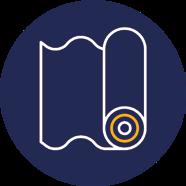

Cones become chain blanks
50,000 cones are recycled at our supplier Agtrup Plast into chain blanks for Frontmatec
8 tons of leftover yarn Leftover yarn upcycled into bulb cords for suspension of duct systems

35 tons upcycled into acoustics Textile waste is recycled into new acoustic product at Kvadrat Really
Anything but standard.
At KE Fibertec, we work every day to optimise and develop our solutions for more climate-friendly ventilation with the smallest possible footprint and the greatest possible recycling potential. Therefore, it has been a natural step in our sustainability journey to develop EPD documentation for our solutions.

While others have created EPD documentation for parts of a solution, our documentation is different because it provides full insight into all footprints. With calculations for all components from fabric, mounting parts, accessories and packaging, you get product-specific CO2 data that make it easy to choose our textile based ventilation solution.

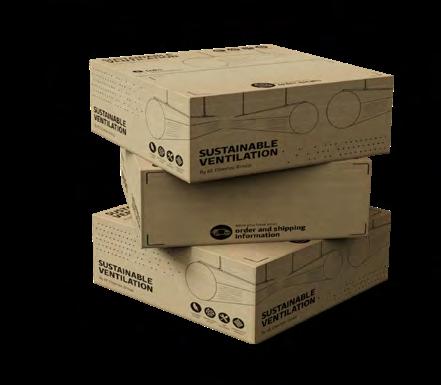

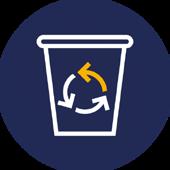
CASE: CARBON EMISSION
4-5 times lower footprint with textile ducting.
At KE Fibertec, we provide a full overview of a ventilation solution’s carbon footprint with our third-party verified EPD documentation. Choosing a textile based ventilation solution results in a 4-5 times lower carbon footprint compared to an identical solution with steel ducts*. In the example below, we explain how a textile based ventilation solution is the right choice when you want to do something good for the environment.
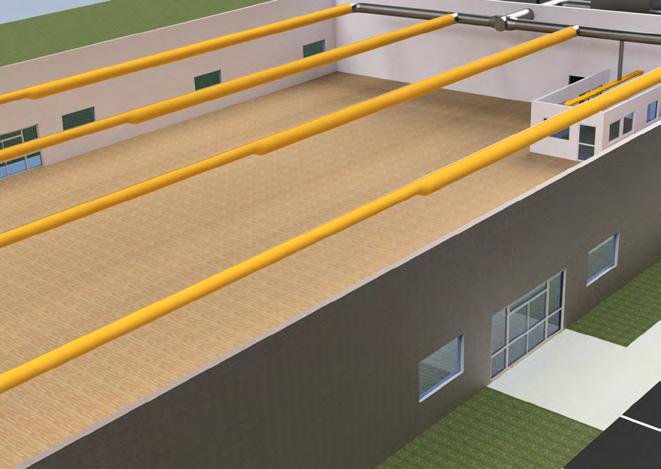
TBV FACTS (TEXTILE BASED VENTILATION)
110 m x Ø710 mm and 110 m x Ø500 mm Total weight of TBV system: 287 kg

Raw materials and transport to production
CRADLE-TO-GATE
1.86E+03 kg CO2 eq (TBV)

SBV FACTS (STEEL BASED VENTILATION)
110 m x Ø710 mm and 110 m x Ø500 mm
Total weight of SBV system: 2.5 tons
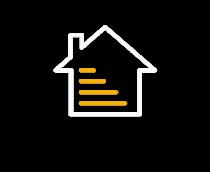


9.71E+03 kg CO2 eq (SBV) SBV emission 5x higher than TBV*
CRADLE-TO-GRAVE
2.34E+03 kg CO2 eq (TBV)
9.87E+03 kg CO2 eq (SBV) SBV emission 4x higher than TBV*
All calculations of emission data for SBV and TBV are based on EN 15804 + A2.
*Source: Industry-specific EPD, Veltek Denmark
Good indoor climate is also sustainability.



Advantages of textile ducts
• Efficient air distribution and good indoor climate
• Flexibility and customised solutions
• Unique materials and colours
• Fire approved materials
• Hygienic and easy to wash
• Quick installation and commissioning
• Ergonomically advantageous with low weight
Sustainable benefits
• Good indoor climate with efficient and uniform air distribution
• Flexible and customisable solutions reduce material waste
• Low weight means less fuel consumption and lower carbon emissions during transport
• Maintenance programmes extend service life
• Possibility to recycle end-of-life CradleVent® systems


KE Fibertec Weaving Mill.
High level of material knowledge ensures good indoor climate
All our textile materials are woven at our own weaving mill in Denmark, where we can control the entire production process from yarn to finished textile material using the latest air-jet weaving technology.
We place very high demands on our subcontractors, and all raw materials are subject to a comprehensive incoming goods inspection before we start weaving. Therefore, we do not compromise on the quality of the processes our materials go through, from the moment we start winding the yarn until we deliver finished stock items.
For us, it is crucial that we can control the air permeability of our textile materials. One of the unique advantages of textile based ventilation is that we can supply the room with the exact amount of air needed to optimise air exchange and ensure a good indoor climate. Whether it is a classroom in a school or a large production hall in industry.
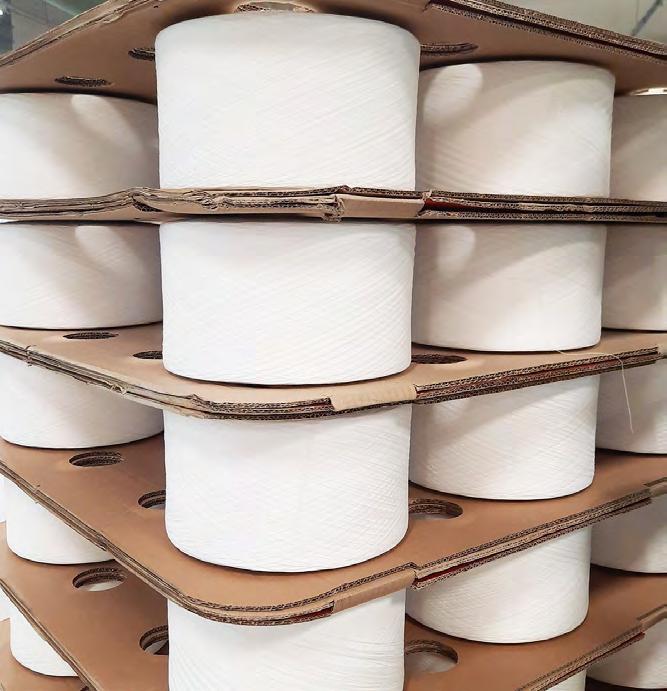
From yarn to duct
• 100% traceability - we control the process from yarn to finished fabric
• Guaranteed uniform air permeability
• No post-treatment of the textile material needed to meet fire requirements
• Fire approved materials according to EN13501 and UL 2518 standards
• Cleanroom materials tested according to ISO class 4, cf. ISO 14644-1
• Cradle to Cradle approved materials
• Use of dyed yarns (minimises water consumption)
• High Dust Holding Capacity reduces washing intervals
• Maximum shrinkage rate of 0.5% after washing

Washing with care.
A ventilation duct needs to be maintained in order for it to maintain its performance and thus be energy efficient. This applies to both textile ducts and steel ducts.
Ensure a healthy indoor climate
Dust, dirt and, in the worst-case scenario, microorganisms in the ventilation system will reduce its efficiency and may, in some cases, be directly harmful to people’s health.
To ensure a healthy indoor climate and the best possible energy efficiency, it is therefore important to regularly inspect ducts, dampers, valves and filters in the ventilation system. Washing and maintenance costs must be included in the design as early as in the project planning phase.

Guaranteed clean ventilation
With correct maintenance and regular washing of the textile ducts it is possible to save energy and extend the life of the product. Several KE partners offer inhouse washing and maintenance services.


• Low weight and easy disassembly for maintenance and later reinstallation
• Regular washing and maintenance helps maintain duct air permeability
• Washing textile ducts reduces bacterial contamination in the food sector
• Coloured materials retain their attractive appearance even after many washes
2026
CSRD reporting in owner group based on 2025 financial statement.
2030
KE Fibertec’s Danish factories become carbon neutral.
2024
Introduction of third-party verified EPDs with complete CO2 documentation. Preparation of internal ESG reporting (sustainable ventilation). Weaving mill becomes 100% waste neutral.
2022
KE Fibertec participates in Climate Ready Production company (Scope 1, 2 and 3). Strategic co-operation on recycling of approx. 35 tons of textile waste. 62% lower carbon footprint with introduction of new packaging line.
2020
All yarn waste is recycled into bulb cords for suspension of KE Fibertec textile ducts.
2021-2025
Strategy ‘Sustainability as a business model’ 1: Carbon neutrality 2: Waste is a resource 3: Building certifications 4: Healthy materials
2023
Strategic agreement to recycle empty yarn cones into new product at our subcontractor. The MultiWeave material is Cradle to Cradle certified.
2021
Certification according to the UN Sustainable Development Goals. Complete documentation material according to DGNB, BREEAM and LEED standards.
2016
KE Fibertec is the first company in Denmark to be recertified acc. to the new ISO 9001:2015 and ISO 14001:2015 standard.
2016-2020
Focus on energy optimisation. Water-based cooling and new air handling units.
2012-2014
Certification according to the Cradle to Cradle standard.
1999
KE Fibertec Weaving Mill is established in Vejen.
1998
Certification according to ISO 9001 and ISO 14001 (today ISO 45001).

We work purposefully on saving the planet’s resources

We are dedicated to working towards becoming carbon neutral by 2030

We work continuously and purposefully with CSR throughout the organisation
KE Fibertec AS Industrivej Vest 21 DK-6600 Vejen

Since 2012, we have reduced our carbon footprint, waste and consumables
T: +45 7536 4200
info@ke-fibertec.dk www.ke-fibertec.com
